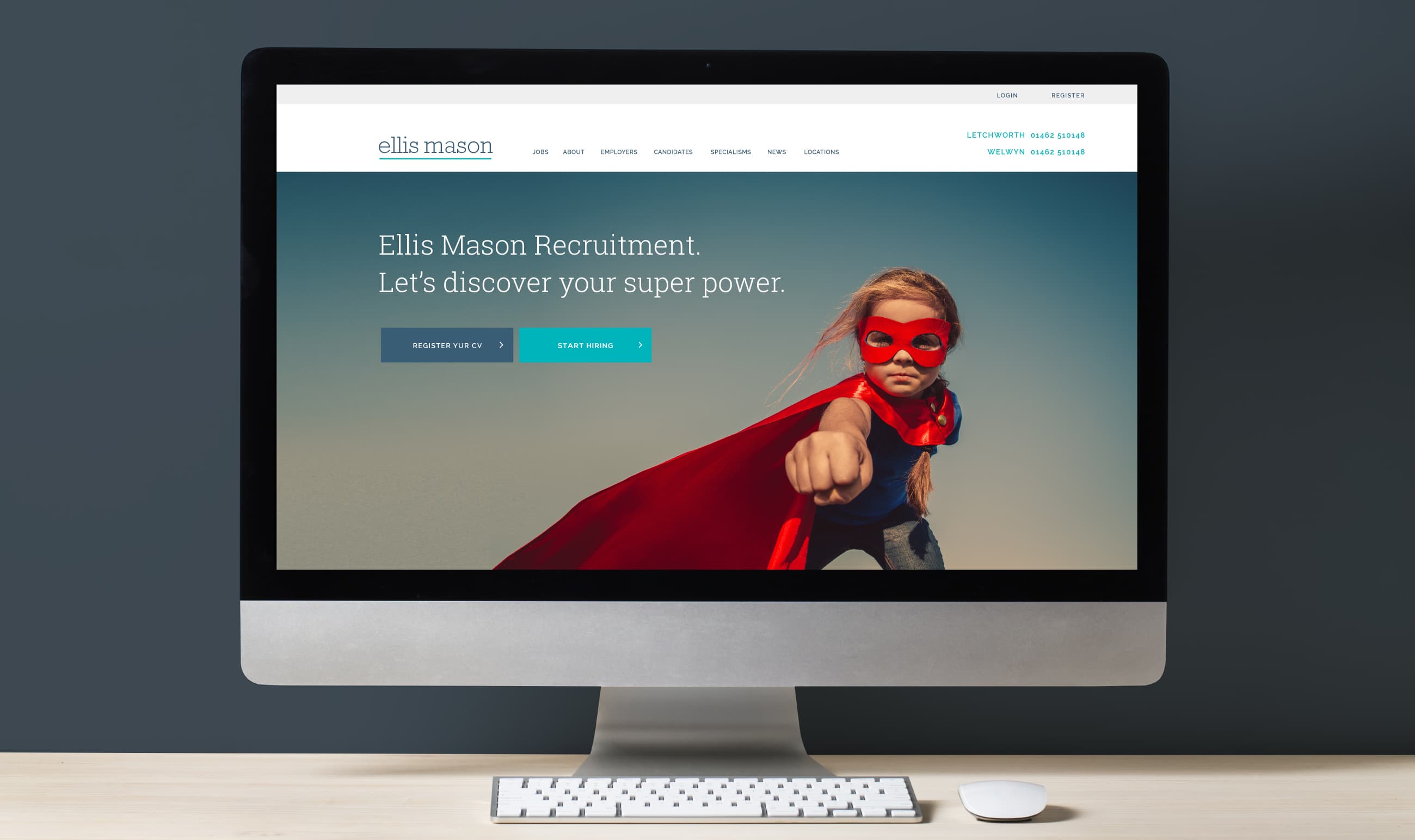The ultimate guide to bespoke web design and development
table of contents
Having a website for your business in today’s digital age is a must. Bespoke web design allows you to engage with your target audience and provide you with more conversions. This could be through lead gen forms, discovery calls or other marketing methods.
Bespoke web design will represent your brand, values, voice and provide engaging content. In turn, this will lead relevant readers down your sales funnel. Another key reason to have a good website is to help build trust with your prospects. This is an important factor in their decision to engage and buy from you. There are several ways you can present information that will establish trust. This ranges from letting people know how long you’ve been in business, to putting up testimonials from happy customers.
Above all, a website will provide a means for your potential customers to contact you, follow you on social media, or even message you via a chat feature. You can include details such as where you’re based, telephone numbers and social media accounts.
Bespoke web design will showcase your unique selling point (USP), range of products and/or services. In other words, a unique site will provide an immersive digital experience that appeals to your target audience.
What makes a good bespoke web design?
Simply having a generic website isn’t going to win you any new business. A good website grabs the attention of your ideal customer and makes them feel like they’re in the right place. This leads to the bigger picture of what’s known as user intent. To improve your search engine ranking and conversion rates, your site must be optimised to fit the needs of who is visiting. That’s why bespoke web design will ensure every part of your website is designed with your ideal customers in mind.
A good website provides a secure, smooth user experience that separates your brand and provides great ROI.
Why bespoke web design is important
Bespoke web design allows you to have a beautiful website coded specially for your business needs.
With today’s mass usage of portable devices, a mobile-friendly, accessible design is vital. A custom made website allows you to engage with your brand across multiple devices. Subsequently, your customers and prospects will experience a smoother user journey.
Bespoke web design vs off-the-shelf templates
‘Off-the-shelf’ websites are pre-built templates that allow you to get your website off the ground sooner. They’re easy to install, contain basic SEO, and are suitable for people with less technical knowledge and creative skills. Whilst these DIY methods to building websites have improved in recent years, they still contain limitations. Unfortunately, these will likely negatively impact your ability to grow.
Website template builders only allow you to populate certain sections, making it more difficult to align the website to your brand. They’re often bloated with redundant coding and contain features that may not be suitable for your business. This slows things down and provides a poor user experience.
With many other businesses using the same base templates, your website will fail to stand out from the crowd and prevent you from gaining a competitive edge.
Finally, off-the-shelf solutions are unlikely to provide the level of dedicated customer support you’d get from a web design agency.
Bespoke web design gives you more control over how you’d like your website to look and perform. By partnering with a trusted creative agency, you can work together to narrow down what designs and features will resonate with your potential customers. Defining your brand with colours, patterns, front and imagery – without the restrictions of a template – ensure your final results are unique and memorable.
More often than not, deciding whether to choose off-the-shelf or bespoke web design comes down to upfront costs. The DIY approach can be cheaper in the short term to get your business up and running. However, if you want more flexibility with your design and improve your search ranking, you will benefit from partnering with a bespoke web design agency.
Why bespoke web development is important
Building a website to your exact needs has many benefits. Without the redundant code bloating many of the off-the-shelf solutions, your website will run faster and provide a better user experience. Moreover, page speed is a direct SEO ranking factor, meaning it can help to improve your Google rank.
Having full scope over the size and complexity of your website means the site can be designed around your business needs. For example, an independent shop selling chocolate brownies could benefit from a smaller, simpler site. On the other hand, a medium sized e-commerce store selling electronics will require more complex features and many pages.
A Content Management System (CMS) allows you to create, edit and publish content to your website. This software is often accessible to you or an authorised user following the websites completion, and is useful for posting and updating blogs. A bespoke web design agency often customises the CMS to fit your needs. They can also restrict certain areas to prevent unplanned changes or sections that require a high level of expertise to manage.
A website with beautiful designs alone will not necessarily provide you with more customers. For most businesses, functionality is important for visitor engagement, providing information and linking with other software.
Examples of website functionality include:
- Collecting data from customers.
- Integrating a Google map.
- Importing data feeds from third party suppliers.
- Having high-spec animations and interactive elements.
Search Engine Optimization (SEO)
What is SEO and why is it important?
Simply having a pretty website doesn’t mean people will find it. That’s where Search Engine Optimization (SEO) comes in. The field of SEO is large, and covers a wide range of topics. For this guide, we will introduce you to some of the basics.
Many factors influence how well your website will rank in search engine results. Afterall, sites like Google want to ensure they provide the best results for their user queries. The way they do this is by using a crawler, an index and an algorithm. The crawler ‘crawls’ the web 24/7 and saves pages in a huge database known as the index. This index is then updated every time it comes across revised pages of your website.
When you type a search query into Google, the search engine attempts to align this to web pages that have been indexed. Google uses a secret algorithm that decides the order of pages (the rank). What’s more, this algorithm is becoming more advanced to include a wide range of factors that affect every part of a website.
Holistic SEO is the practice of improving all aspects of your website. This makes sense, as Google wants to ensure it’s directing people to the websites that provide the best user experience whilst matching their search intent.
Websites should focus on these core areas to improve SEO:
- Technical SEO
- High-quality content and structuring
- An excellent user experience
- Website security
Technical SEO
Technical SEO refers to the technical parts of your website that go towards your overall ranking factor in search engine results. These include attributes such as:
- Website speed – A slow website will turn off customers.
- Core Web Vitals – Set of performance metrics that Google considers important for your website’s usability.
- Schema markup – Code placed on your website to help search engines understand your content and therefore return more detailed results.
- Image sizes – Compressing images and optimizing these for different devices (mobile, tablet and desktop).
- Mobile optimization – Improving the user experience on mobile devices.
- Accessibility – Making sure your website is accessible to everyone.
Sometimes it’s easy to think that technical SEO is just about satisfying search engines. However, it’s the user experience that will decide whether a prospect will want to engage further with your brand and invest in your product or service. So having a site which is fast, smooth and easy to use will cater for both search engines and visitors.
On-site SEO
On-site SEO (also known as on-page SEO) involves optimising your web pages so your website can rank better in search engines. Keyword research is a pivotal part of on-page SEO and aids all parts of the on-page SEO strategy.
Keyword intent allows you to narrow down the exact set of words people are using to try and find the types of products and services your business offers. One way of quickly getting an idea of these without using advanced tools is to view the search engine results page (SERP). This is located at the bottom of the page after you’ve searched on Google.
SEO copywriting
SEO copywriting is a vital part of every SEO strategy, employing a range of copywriting techniques and keyword research to create content which is succinct, engaging and fine-tuned for the target audience.
The 2 stages to SEO copywriting
There are two steps involved in SEO copywriting – keyword research and the writing stage.
The keyword research stage of SEO copywriting includes:
- Brainstorming keywords and using keyword research tools (free and paid).
- Evaluating search intent.
- Determine the landing pages.
The writing stage of SEO copywriting includes:
- Content planning
- Structuring
- Writing
- Elegant keyword placement
- Proofreading
Support and maintenance
Buying a domain name
A domain name might sound technical, but it’s easy to understand. Essentially a domain name is the unique address that allows people to find your website on the internet. Buying one isn’t difficult either, as long as you know the basic steps. Purchasing your domain name gives you long-term control, and Union 10 Design are here to support you through the process.
Why hosting is important for bespoke web design
Web hosting is an essential part of your bespoke web design support package, as you will need a hosting company to publish your site. Similarly to domain names, this should be set up to allow you to have full control. However, Union 10 Design can help you connect with a trusted hosting company and advise on what steps to take.
WordPress training
We don’t believe in designing your website and leaving you to it. Instead, we want to help you nurture your website using an easy to use system. That’s why we offer WordPress website training, so you can confidently manage content such as blog posts and edits to your web pages.
Discover more about our WordPress Website Training.
SEO Training
Although we create beautiful bespoke web design, we know that launching a website alone won’t automatically give you more business. To truly get your website in the eyes of your target audience, you need to invest in SEO (Search Engine Optimisation). But rather than you having to search for an SEO agency, we offer comprehensive SEO Training as part of our range of services.
Discover more about our SEO Training.
Bespoke web design sets you apart
Off-the-shelf solutions can get your website off the ground quickly, but their limited template designs, bloated code, basic SEO and generic feel can leave your website in the dark.
By investing in bespoke web design that showcases your value proposition, unique selling points and brand image, you’ll reassure prospects they’ve landed in the right place for their needs. Furthermore, nurturing your website through SEO and content management using easy-to-use tools will allow you to gain more conversions and ultimately grow your business.
Get in touch today and we’ll make your website vision a reality.



